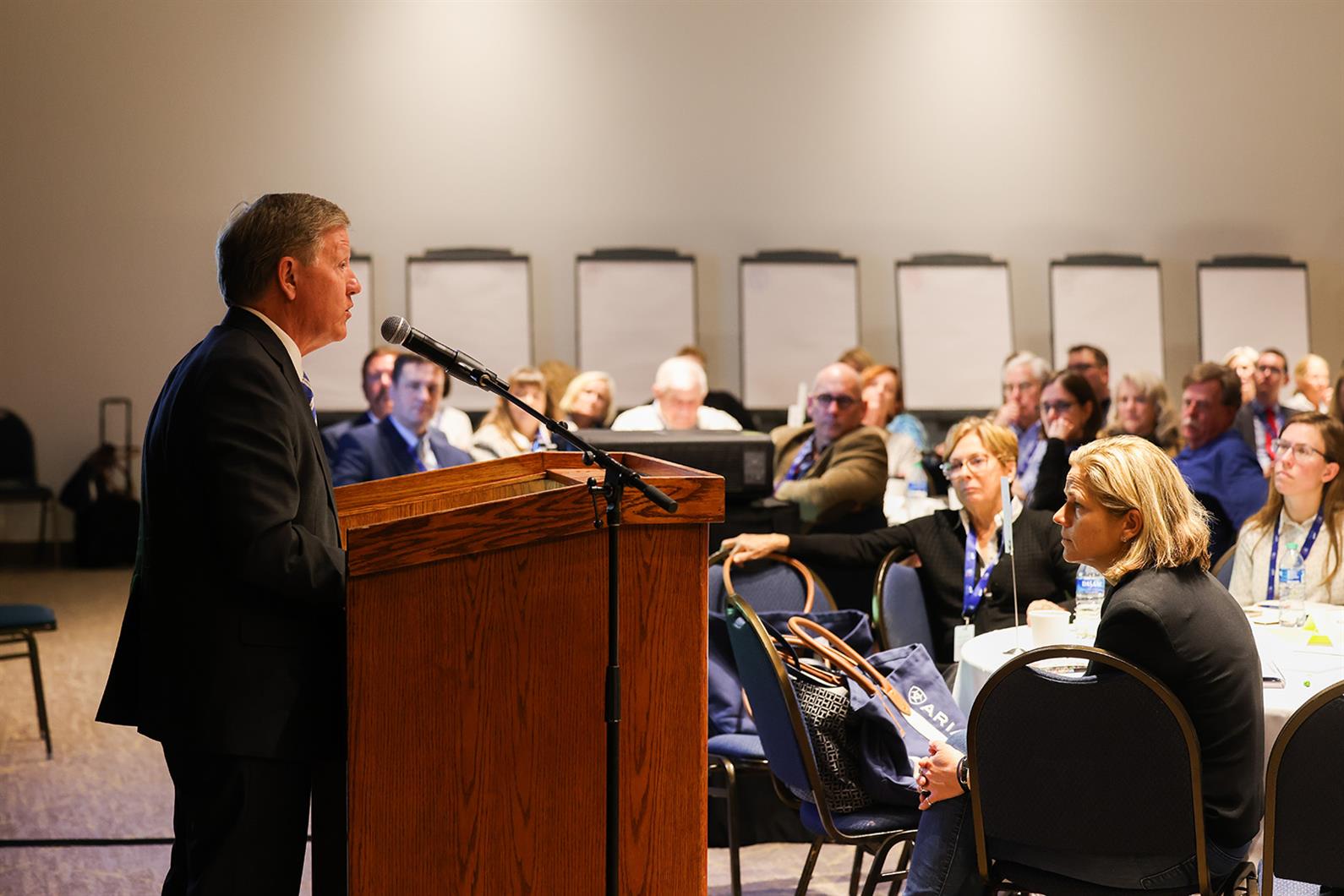Alex Waldrop, the former Chief Executive Officer of the National Thoroughbred Racing Association (NTRA), shared U.S. horse racing’s history and recapped some of the challenges that horse racing has faced in the past 15 years. The challenges affected horse racing’s social license to operate and required earnest changes to improve horse welfare.
“An old adage comes to mind: ‘If you can’t be a good example, you’ll just have to be a horrible warning.’ Fortunately today, we do have a few examples of progress to share, but I will also have to share that there will be a few horrible warnings in here as well,” Waldrop said to start off his talk.
He defined the “social license to operate as reference to the sentiments of stakeholders and the public at large on the project, company, or industry that operates in a given field in a way that is socially acceptable and legitimate.”
Integrity was the main concern during U.S. horse racing’s early history
Horse racing took place across the country in the 19th and 20th centuries, but credibility issues led to pari-mutuel betting. Pari-mutuel betting was restricted by Prohibition, but horse racing made a resurgence after the Great Depression when states needed revenue and taxing horse racing met that need. The integrity of the races remained the main focus for several years.

Welfare came to the forefront following highly publicized horse deaths
Catastrophic injuries at Triple Crown races in the late 2000s challenged horse racing’s social license to operate. In 2006, Barbaro’s hind leg fracture during the Preakness Stakes began serious discussions about horse welfare. In 2008, Eight Belles fractured both front legs galloping out after the Kentucky Derby and was euthanized on the track due to non-recoverable injuries. Waldrop noted that the public was up in arms and horse racing’s social license to operate was in danger. To add to the challenges, the trainer of Big Brown, the Kentucky Derby winner, shared publicly that he was legally administering steroids to his horse.
The NTRA decided to make a statement during NBC’s 2008 Preakness Stakes broadcast, and Waldrop made two points that he hoped could become a reality. “The first thing I said was that the public needs to know that horse racing cares about every horse, every race, every track, every day. That is our goal and that is what is fundamental to the way we do things,” said Waldrop. “And, I said we are going to eliminate steroids in horse racing by the end of the year. And, by golly, we did.”
The NTRA used polling to determine their next steps
The NTRA started polling the horse racing industry to gather data. They found that horse racing insiders thought integrity was the primary concern, while causal fans were most concerned about the safety and welfare of horses. The NTRA used the data to move forward with meaningful changes and results.
Waldrop noted that central authority options were limited with states unable to agree on standards, so an industry self-regulatory accreditation model was used, resulting in the NTRA Safety and Integrity Alliance. Tracks became accredited with improved safety standards, helping to restore horse racing’s social license to operate.
More crises challenged horse racing’s social license to operate
“Social license is very much susceptible to crises, and a crisis is the time that your social license is really put to the test,” said Waldrop. “Day in and day out, not so much, but crises really have a way of doing that.”
In the winter of 2019, California received heavy rains that affected a track not designed for such weather, the NTRA-accredited Santa Anita. Thirty horses died at the track in a short span of time, and various groups tried to shut down the track. Santa Anita implemented unmatched safety improvements and horse fatalities dropped. The NTRA and California tried to put together legislation to protect the future of horse racing in the early spring 2020, but they were unable to get it to move forward.
Another crisis arose on March 9, 2020, when two dozen horse racing employees were arrested for an equine doping scheme. It seemed that this crisis could be the final straw for horse racing. Waldrop noted the words from a scathing opinion piece from The Washington Post titled Horse Racing has Outlived its Time and published on March 13, 2020, “this is what it sounds like when your sport, your business, is losing its social license. In fact, some would say we lost it that day. We teetered on the edge of losing it.”
Federal legislation focused on horse welfare helped reform horse racing
Federal legislation seemed to be the only solution to the challenges faced by the horse racing industry. Though federal legislation posed risks with industry outsiders largely making decisions that would affect horse racing’s future. Legislators from states with strong equine industries took notice of horse racing’s struggles and worked with industry leaders to create legislation. A bill was put on as rider to the 2020 funding bill and passed. The Horseracing Integrity and Safety Act of 2020 required uniform standards in horse racing, such as anti-doping and racetrack safety programs.
“Some of us in horse racing are openly embracing the ‘forbidden’ federal regulation,” said Waldrop.
The regulations have improved horse welfare in the industry, harkening back to Waldrop’s statement that “horse racing cares about every horse, every race, every track, every day.” While horse racing’s social license to operate has been aided by these regulations, the industry’s struggles are a cautionary tale to equestrian sport.


